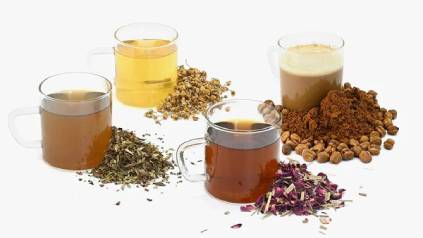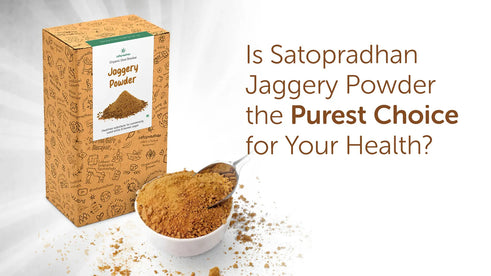







Unsweetened Cacao Powder - Choose from 100g or 700g - 100% Pure, Natural, Organic & Healthy - Non Alkalised - Organic Chocolate Powder
Ingredients
Cacao Powder extracted from Indian Organic Cacao Beans Grown in Karnataka
Origin: Karnataka, India
Key Values
- 100% Natural & Organic
- Naturally Rich in Healthy Fats
- Dairy-Free
- Roasting Temperature 105°F
- pH Value 6.5
- Vegan & Gluten-Free
- Versatile Use
- Rich Chocolatey Flavour
- Smooth & Finely Ground
- Earthy & Intense Chocolate Aroma
- Rich in Antioxidants
- Non-Alkalised for Maximum Nutrients
- No Preservatives & Flavours
- No Added Sugar
Benefits
- Rich in antioxidants & protects against free radicals and supports overall health
- Boosts mood naturally to enhance happiness and energy
- It improves blood circulation and lowers blood pressure with its flavonoids
- Packed with magnesium, iron, and potassium for strong bones and energy
- Rich in antioxidants that improve skin elasticity and glow.
- Contains natural stimulants like theobromine for a gentle energy boost
- Enhances recipes from drinks to desserts with its rich chocolate flavour
Perfect for plant-based and health-conscious diets
Usage
- Add to nut milk for a rich, indulgent chocolate flavour milkshake.
- Sprinkle over dairy-free coffee for a delightful chocolaty twist.
- Create a delicious banana chocolate smoothie bowl packed with flavour.
- Make homemade dairy-free chocolates for a guilt-free treat.
- Bake irresistible vegan chocolate cakes, cookies, brownies or fluffy muffins
- Combine cacao powder with coconut oil and sugar to create a gentle face scrub that removes dead skin cells
- Use as a dry shampoo alternative by sprinkling a small amount of powder (for darker hair) onto the scalp and brush through to absorb oil and add volume between washes.
Storage
No refrigeration is needed. Store in an airtight container in a dark, cool, dry place away from the moisture & direct sunlight. Transfer to an airtight container within a few days of receiving it to preserve its freshness, flavour, and quality.
Shelf Life
18 months from the date of packaging.
100g Packed on
Aug 2025
Batch No.
IND040725
700g Packed on
Sept 2025
Batch No.
IND230625
To add sweetness to your recipes, please check out the following links
Have a question?
click here
No Videos available at the moment.
Yes. Our cacao powder is 100% pure and unsweetened, containing no added sugars, artificial ingredients, preservatives, or fillers. It’s suitable for clean eating, vegan, and paleo lifestyles and ideal for those who want to control what goes into their body—whether for daily use or spiritual practice.
Absolutely! Our cacao powder pairs beautifully with plant-based milks (like almond, oat, coconut, or cashew) to create nourishing satvic drinks. Whether in smoothies, hot elixirs, or raw desserts, it’s a versatile base for every dish
Our cacao powder is raw, meaning it is processed at low temperatures (usually under 45°C) to preserve the natural enzymes, antioxidants, and nutrients found in the cacao bean. This makes it ideal for anyone looking for the full nutritional and energetic profile of cacao.
Our cacao powder is non-alkalised, which means that it retains its natural acidity, bitterness, and higher antioxidant content. It has not been treated with any alkaline chemicals, so it's closer to how cacao exists in nature—making it a better option for those seeking minimally processed, nutrient-dense cacao.
We haven’t created our powder specifically for ceremonial use. However, our cacao is minimally processed, non-alkalised, raw, and free of additives—qualities that align closely with ceremonial standards. While it's not made specifically for ceremonial purposes, it can be used in mindful rituals, meditations, or heart-opening practices, especially when prepared with intention.
Yes, cacao powder, if used in moderation daily, is generally safe for most people and may support mood, circulation, and focus.
Cacao powder can have mixed effects on migraines, as it contains magnesium, which may help relax blood vessels, but also caffeine and theobromine, which can be triggers for some individuals. While its antioxidants and serotonin-boosting properties might aid in reducing stress-related migraines, its potential to cause vasodilation and histamine release could worsen symptoms in sensitive individuals. If caffeine is a known trigger for you, it’s best to avoid cacao during a migraine, but if magnesium helps, consuming it in moderation might be beneficial. Tracking your body’s response can help determine whether it works for you.
Here is a simple recipe to make a chocolate shake using Satopradhan cacao powder, dates, and nut milk:-
Ingredients:
- 2 tablespoons of cacao powder
- 2-3 Kimia dates
- 1 cup of nut milk (almond, cashew, or any other nut milk of your choice)
- 1-2 cups of ice
Instructions:
- Soften the dates in warm water for 10-15 minutes. If you are using Kimia dates, then there is no need to soak them.
- Drain the water and add the dates, cacao powder, and nut milk to a blender.
- Blend on high until the mixture is smooth and creamy.
- Add ice cubes to the blender and blend until the ice gets completely crushed and the shake is frothy. Taste and adjust the sweetness by adding more dates if needed.
- Pour the chocolate shake into a glass and enjoy immediately.
Note: You can add a tablespoon of nut butter or a banana for flavor or make it a complete meal. Additionally, you can top it with raw cacao nibs for a more indulgent treat.
Cacao powder can be a part of a healing diet, but it should be consumed in moderation and with an understanding of its potential effects on your health. It's essential to consider factors like caffeine sensitivity, digestive tolerance, and dietary restrictions when incorporating cacao into your diet during the healing process. Consulting with a healthcare professional can ensure your dietary choices align with your health goals and needs.






